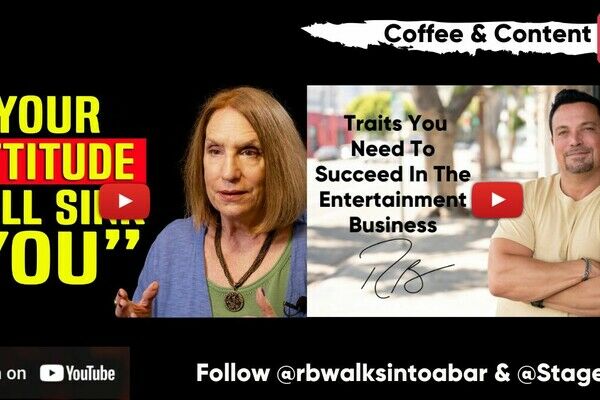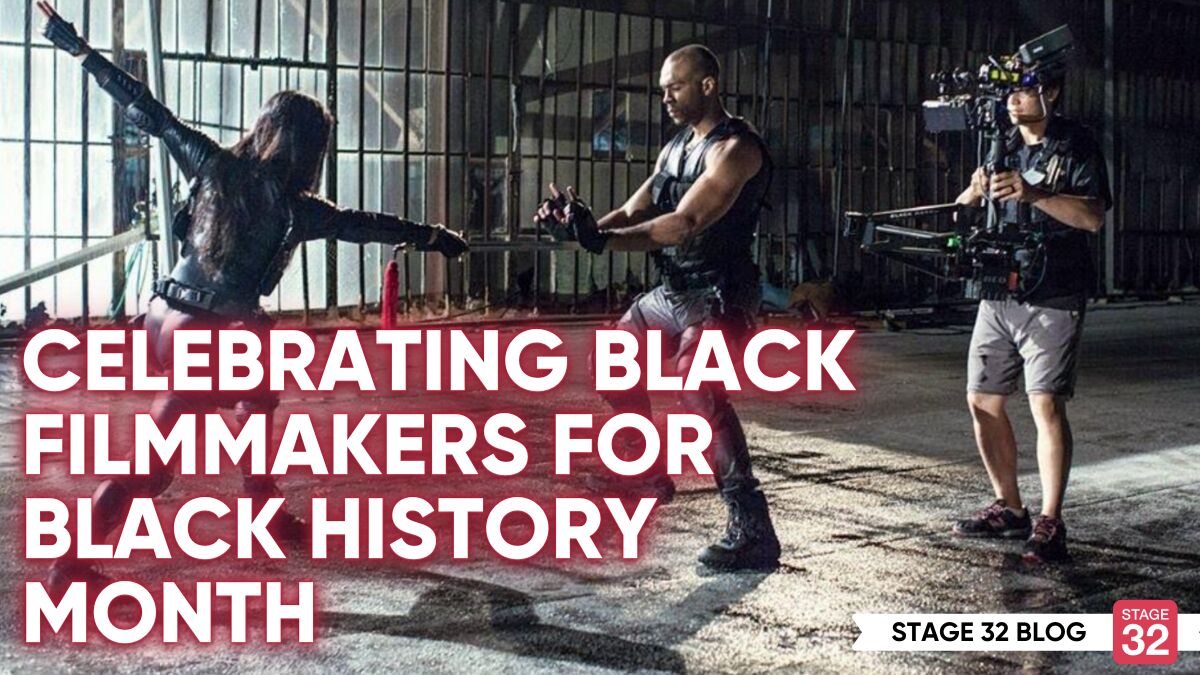How to Make a Web Series with the Budget of a Ham Sandwich
The entirety of my film experience is with indie filmmaking. To be perfectly honest, most of that experience is making 48 Hour Films. There’s just something about throwing a project together from scratch that thrills me.
For years, I’ve wanted to do more.
In the last year, I finally got the chance.
About a year ago, I read an article about how a person rerouted money in their budget into a savings account for a quarter of a year. They then used that money to make a short film. They realized that by doing this, they had something real and tangible to add to their reel that wasn’t a spec script or a concept.
After reading the article about four times, I was inspired to do the same. Unfortunately, that savings ended up being about $500 dollars, and instead of a movie, I wanted to do a web series (because television is my passion).
At this point, I only had the beginnings of an idea. Armed with just that, I went to a friend who makes short films regularly (and is dipping his team's toes into making features) and pitched the idea. He jumped on board! We’d been wanting to do a project together for years (outside of those 48-Hour Films) and this was our chance.
I would write a pilot, and we would figure out how to shoot it with a budget of $500. In the world of film, that’s almost like making it on the budget of a ham sandwich. I have to thank my friend Tina for this description of the cost of low-budget television.
For the first time, I was writing with a firm budget in mind and that changed my process a fair bit. At times, it was constraining but at other times, it was grounding. I knew exactly what I was working with, which took out some of the guesswork.
One of my favorite things about writing like this was how it pushed me. I had to learn new things both as a producer and as a writer.
Here are some things I had to consider while putting the script together.

1. Props
I primarily write mysteries and this project is no exception. That being said, props can play a super important role. For me the challenge is how do I use items I need without breaking my budget.
While writing, I kept an inventory of items I used in the script. Based on that list I figured out what I had around the house, what I knew friends had (more on that later), and, well...
I knew we’d have to make some of the props ourselves.
As I was writing, I turned to Google. How hard is it to make a fake book cover? How much do hollow books cost? How did another film make something?
It wasn’t that the budget influenced the story, it merely influenced how I presented clues. Point A and Point B didn’t change, but at times the path was influenced.
I’m excited about the budget limitations here. Because it lets me play and craft my props instead of buying them. It’s an extra layer, an extra challenge, and the chance to make the show feel that much more personal.
And if there’s a suspicious lack of paintings in my script it has absolutely nothing to do with my utter inability to draw.

2. Costumes
This is where I'm planning to use a lot of my budget. One thing I did here to minimize costs is establishing the episode takes place over a single day, which eliminates the need for a costume change.
Also, it’s set during the day. Day looks are cheaper than evening wear.
Once, I was on a trip when I got the chance to go to a Comic Con without any notice. Of course, I didn’t pack a cosplay and my collection was over 1,000 miles away. Working with my cousin’s wardrobe, I made a pretty decent cosplay.
With this pilot, with this budget, I’m doing the same thing. I may look at my wardrobe, my actors' wardrobes, my friends' wardrobes, and find pieces that I can use to make the look I want.
If push comes to shove, I also have a sewing machine and am not against making things myself.

3. Utilizing resources
When you have no budget, you have to be willing to beg and borrow. And here I have. I had to beg a friend to use their equipment with little more than the experience and maybe some snacks as repayment.
I'm approaching costuming and props with that mindset. The goal is to beg and borrow as much as possible. What I can’t, I’ll make. Buying is a last resort. Luckily, my friends and I are used to doing productions on as little a budget as possible. This is just on a larger scale than we’ve done before.
People are important. Look at your friends. I have a friend with equipment and experience who’s excited to help me with this. My editor didn’t mind picking up an extra project. Another friend is a social media guru and is willing to help me.
I have one more nugget I want to impart in this article. You’d be surprised by the talent you can find in the people around you.
Especially when you’re on a strict budget, they could become an invaluable resource. Don’t spend money you don’t have if you’ve got someone more then qualified willing to help you out.
Did you know Stage 32 has a job board? It’s definitely worth checking out and seeing if you can use this valuable resource to help your project.
Costuming, props, and people are three large budget items. With a small budget, it is crucial that you make the most of that money. Another monetary expense is locations.
One resource we’ve used is the Virginia Film Office. They have a location database that helps you find film-friendly locations. I highly suggest you look for one of these in your state.
Having finished the script, I’m looking over potential locations using this. I also know a lot of film-friendly locations nearby. I actually wrote a couple of locations to be the same spot but dressed differently to save on the number of locations.

4. Practical vs. Special Effects
The truth of the matter is: effects cost money. You also get what you pay for. CGI might be available to almost anyone with a computer, but good animation costs more time and money than most productions can spend. Think about how many films you've seen in theaters that had dodgy CGI. The studio had the money, but the artists didn't have the time.
So for our purposes, CGI effects cost more time and money than we have to spend. But there is another time-honored option: practical effects.
Practical Effects are (generally) reliable, (comparatively) cost-effective, and will always look like a natural part of the scene (since they really are there).
When writing this script, I kept the effects exclusively practical for this reason. When trying to write fantasy elements, that can be tricky. As a writer, you just want to cut loose and have fun with the world.
Honestly, this is where the low budget frustrated me the most. Hopefully, once we film this pilot we are going to crowdfund or apply for grants to fund the rest of the season. But here, I had to keep it simple.
One thing that I found inspiring about how much you can do with practical effects was a bonus feature on the SHAZAM blu-ray. This featurette is almost as long as the movie itself and is worth a watch. They break down the effects in the movie both special and practical and show you how a lot of it was done.
It’s insane how some of it worked and I recommend it from a filmmaking perspective.
In some ways, this is the most ambitious project I’ve taken on to date. I’ve already learned that no amount of research properly prepares you for digging in and filming. Luckily for me, I have a solid team behind me as we begin to put this project together.
Some people may see a lack of budget as a limitation. But to me, it’s a chance to push myself creatively in ways I wouldn’t otherwise. It’s challenging me to be resourceful, mindful of budget, and artsy in a way I haven’t really before. I hope that someday if I get the chance to work on a project with a bigger budget, I can take these lessons and carry them forever.
About Mary-Helen Norris

My editor likes to refer to me as a mystery maven and a sci-fi sorceress and honestly that has become one of my favorite descriptions about me as a professional.
I am also the TV Coordinator for the Time Travel Nexus, Co-host of the Television Crossover Universe Podcast, and award-winning author.
More Stage 32 Blogs by Mary-Helen:
Why I Wish I Knew it was Okay to Ask for Extensions on Deadlines
Why Every Filmmaker Should do a 48-Hour Film Festival
Six Online Resources Every Screenwriter Should Utilize
Easily Avoided Crime Screenwriting Mistakes
Let's hear your thoughts in the comments below!
Got an idea for a post? Or have you collaborated with Stage 32 members to create a project? We'd love to hear about it. Email Taylor at taylor@stage32.com and let's get your post published!
Please help support your fellow Stage 32ers by sharing this on social. Check out the social media buttons at the top to share on Instagram @stage32 Twitter @stage32 Facebook @stage32 and LinkedIn @stage-32
Take Stage 32 with you! Download the Stage 32 app for iOS here.
| Celebrating Black History Month and Diversity/Inclusion in the Industry |
| Celebrating Black Filmmakers for Black History Month |
Search Stage 32 Blog
There are now 3681 blog posts for you to enjoy. Search them all by tags below.
Acting, Advice, Cinematography, Coffee & Content, Composing, Contests, Distribution, Featured, Filmmaking, Financing, Inspirational, Networking, Producing, Screenwriting, Success Stories, Tips, Trending,Relevant Tags
Recommended Articles

7 Lessons I Learned From Film Festival Rejections

Coffee & Content: Traits You Need To Succeed In The Entertainment Business

Coffee & Content: In Praise of Great Exposition & Pitching Experiences

Happy Thanksgiving From Stage 32: We Are Thankful For YOU

Coffee & Content: How Do You Overcome Negativity?

Red Carpet Roll-Out: December 2024's New Executives & Education at Stage 32!

Advice For Screenwriters From An Award-Winning Producer & Repped Screenwriter

Say, “Thank you”: Why Gratitude is Your Superpower

5 Tips For Writing Your Life Story






